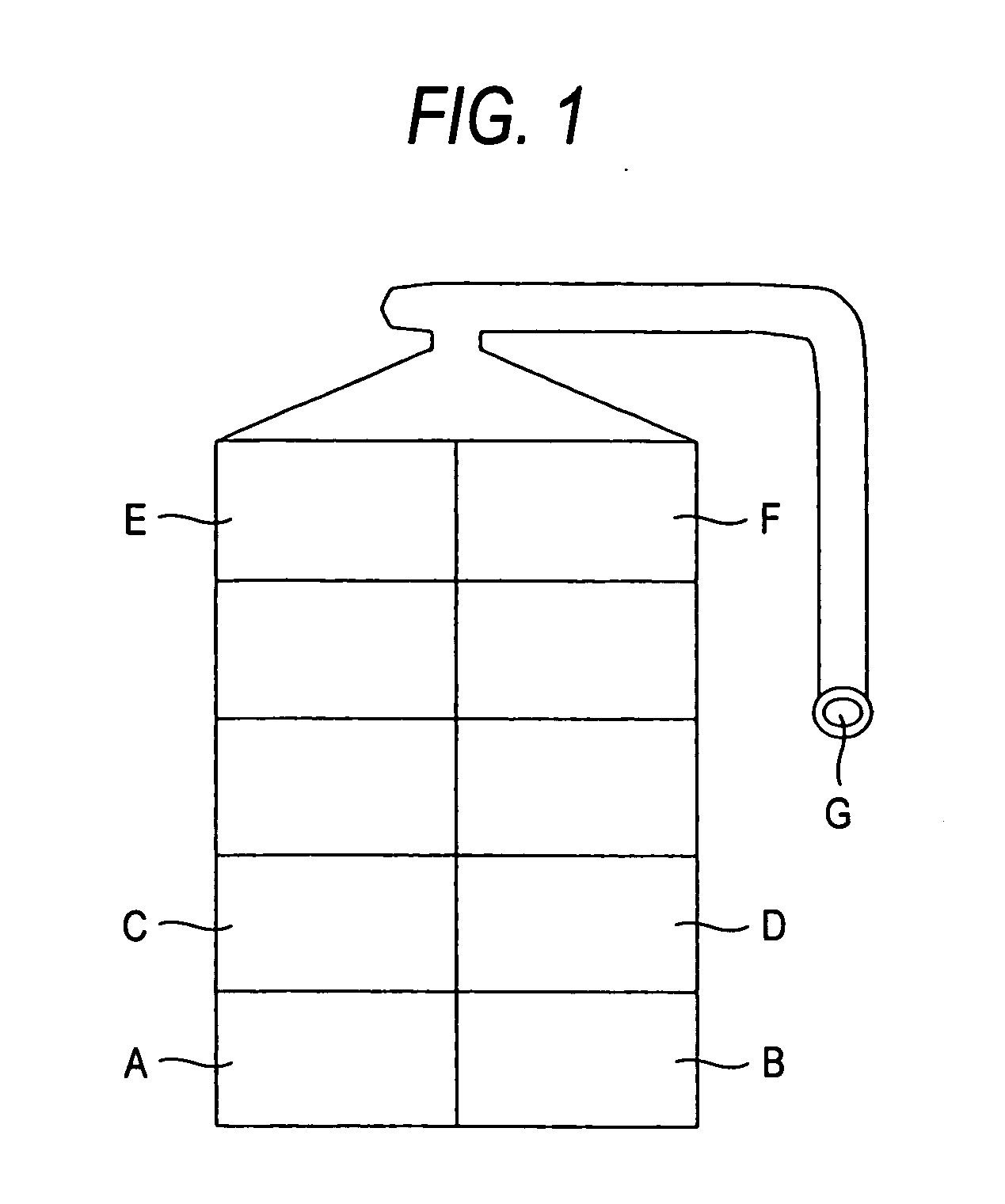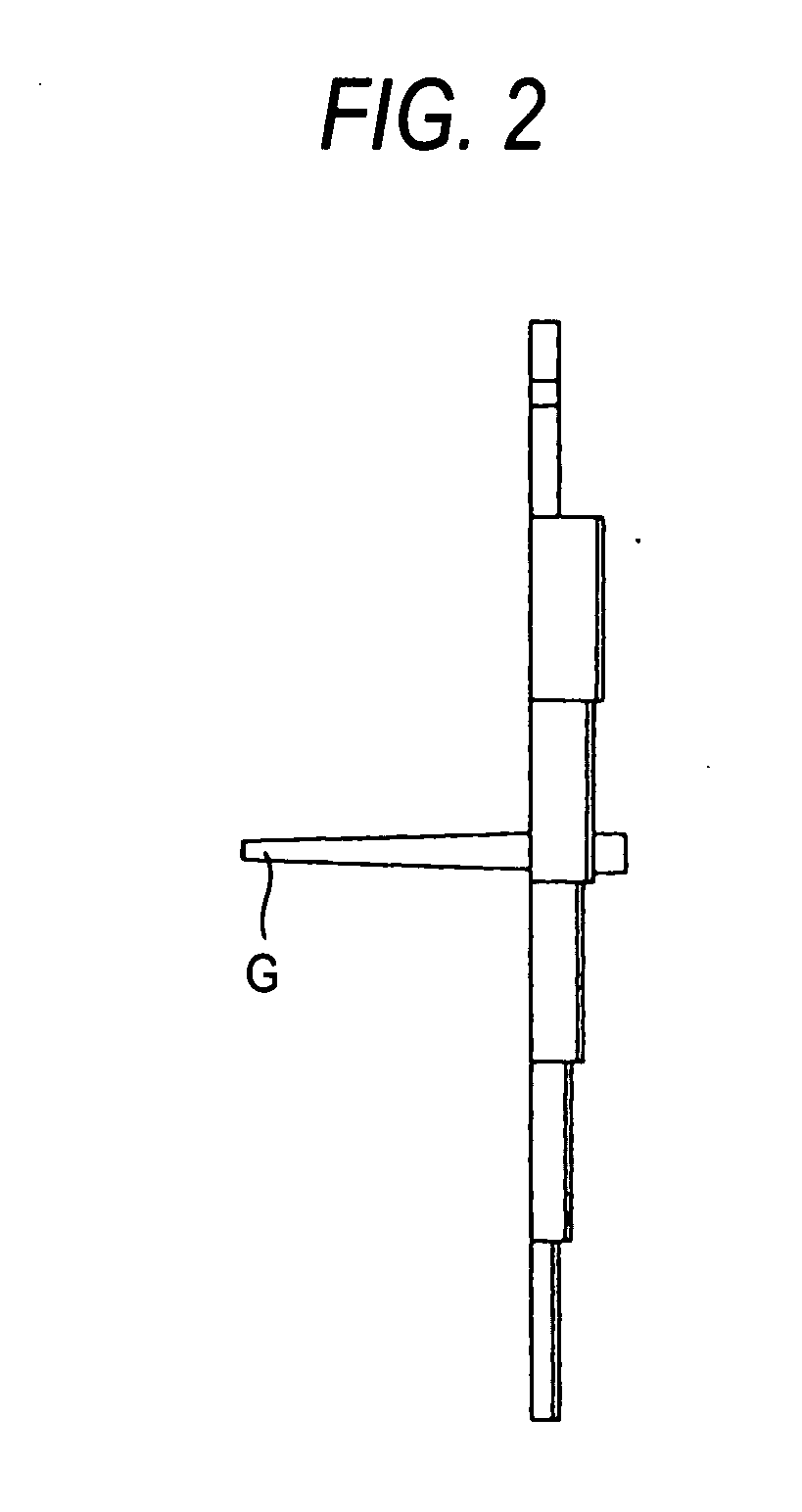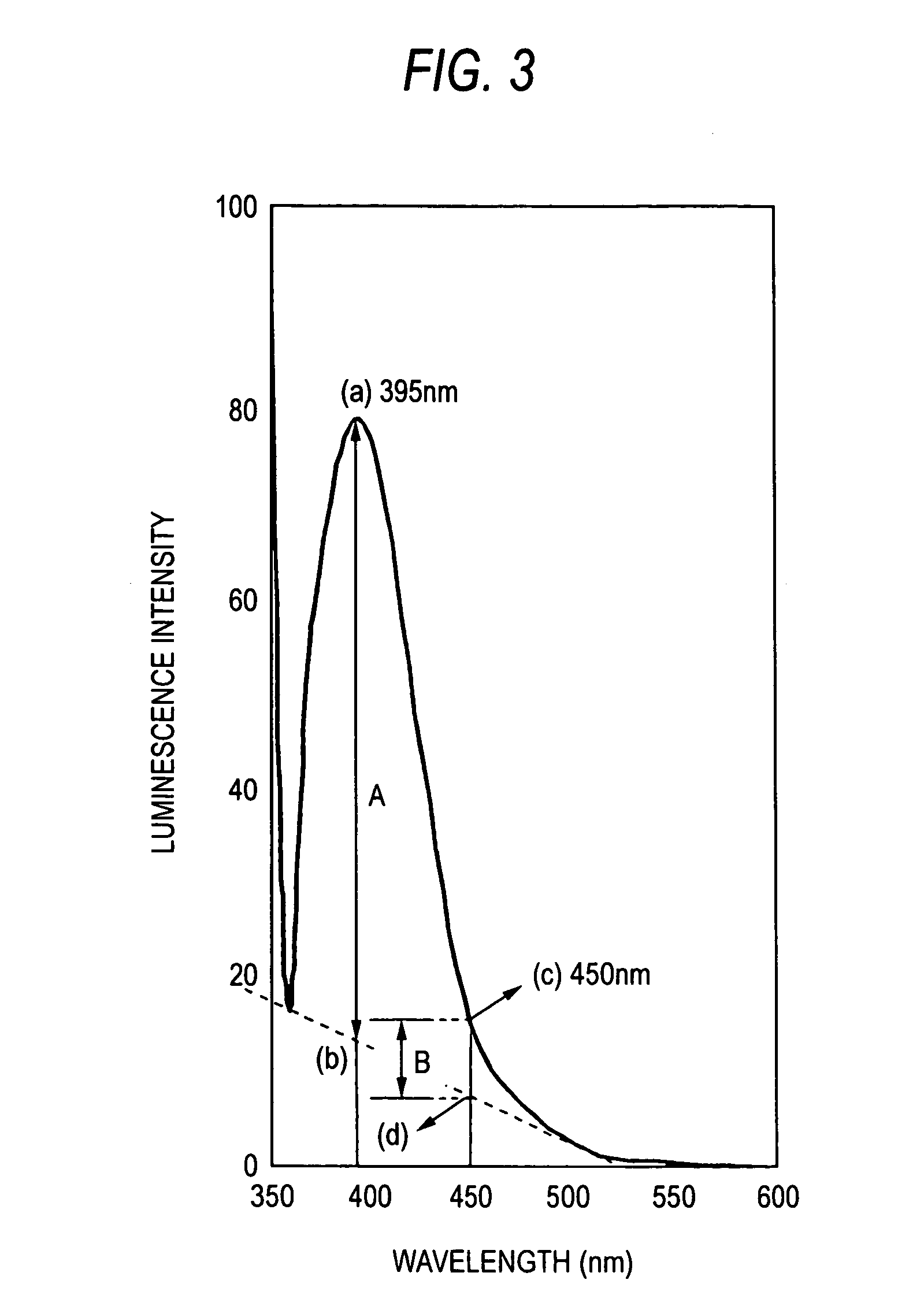Polyester resin
a technology of polymer resin and polymer resin, applied in the field of polymer resin, can solve the problems of contents leaking out of the bottle, poor sealability of the bottle with a cap, shrinkage or deformation, etc., and achieve the effect of preventing fluorescence emission, excellent transparency, and less transparency fluctuation
- Summary
- Abstract
- Description
- Claims
- Application Information
AI Technical Summary
Benefits of technology
Problems solved by technology
Method used
Image
Examples
example 1-1
[0310] From high-purity terephthalic acid and ethylene glycol as starting materials, PET was produced in a continuous melt polycondensation device and a continuous solid-phase polymerization device.
[0311] Into a first esterification reactor previously containing a reaction product, a slurry of high-purity terephthalic acid and ethylene glycol prepared in a slurry-preparing chamber was continuously fed, and with stirring, these were reacted at about 250° C. under 0.5 kg / cm2G for a mean residence time of 3 hours.
[0312] The reaction product was transferred into a second esterification reactor, and further reacted with stirring at about 260° C. under 0.05 kg / cm2G to a predetermined reaction degree. A polycondensation catalyst, crystalline germanium dioxide (sodium content, 0.7 ppm; potassium content, 0.5 ppm; heat loss, 2.8%) was dissolved in water under heat, and ethylene glycol was added thereto under heat. The resulting solution, and an ethylene glycol solution of phosphoric acid w...
example 1-2
[0318] Using a continuous melt polycondensation device and a continuous solid-phase polymerization device that differ from those in Example 1-1, PET was produced.
[0319] Into a first esterification reactor previously containing a reaction product, a slurry of high-purity terephthalic acid and ethylene glycol prepared in a slurry-preparing chamber was continuously fed, and with stirring, these were reacted at about 250° C. under 0.5 kg / cm2G for a mean residence time of 3 hours. The reaction product was transferred into a second esterification reactor, and further reacted with stirring at about 260° C. under 0.05 kg / cm2G to a predetermined reaction degree. Crystalline germanium dioxide (sodium content, 0.5 ppm; potassium content, 0.3 ppm; heat loss, 2.7%) was dissolved in water under heat, and ethylene glycol was added thereto under heat. The resulting catalyst solution, and an ethylene glycol solution of phosphoric acid were separately continuously fed into the second esterification ...
example 2
[0324] A melt polycondensate PET was obtained in the same manner and under the same condition as in Example 1, for which, however, used were an ethylene glycol solution of basic aluminium acetate as a polycondensation catalyst and an ethylene glycol solution prepared by previously heating Irganox 1222 (by Ciba Speciality Chemicals) and ethylene glycol. The intrinsic viscosity of the thus-obtained melt polycondensate PET was 0.58 dl / g. Next, this was subjected to solid-phase polymerization in the same manner as in Example 1.
[0325] This was evaluated also in the same manner as in Example 1. The properties of the obtained PET, and those of the molded plate and the biaxially-blown bottle formed therefrom are shown in Table 1 and Table 2. The results were good with no problem.
PUM
| Property | Measurement | Unit |
|---|---|---|
| temperature | aaaaa | aaaaa |
| temperature | aaaaa | aaaaa |
| thickness | aaaaa | aaaaa |
Abstract
Description
Claims
Application Information
 Login to View More
Login to View More - R&D
- Intellectual Property
- Life Sciences
- Materials
- Tech Scout
- Unparalleled Data Quality
- Higher Quality Content
- 60% Fewer Hallucinations
Browse by: Latest US Patents, China's latest patents, Technical Efficacy Thesaurus, Application Domain, Technology Topic, Popular Technical Reports.
© 2025 PatSnap. All rights reserved.Legal|Privacy policy|Modern Slavery Act Transparency Statement|Sitemap|About US| Contact US: help@patsnap.com



